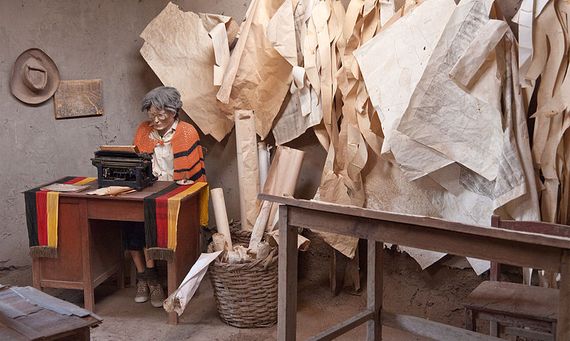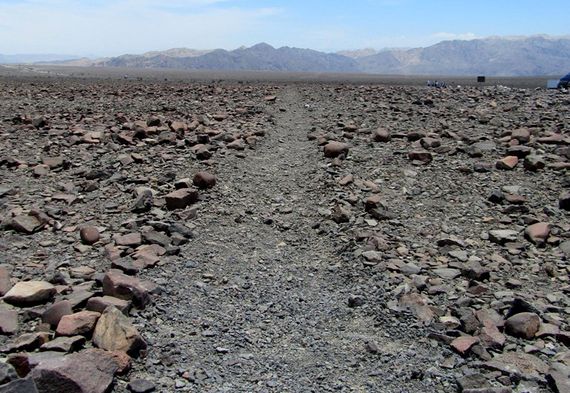In the 1940s, a woman dedicated herself to sweeping metre by metre the Nazca lines, the set of geoglyphs that occupies an area of 50 square kilometres in the desert of southern Peru and whose total length reaches about 1,300 kilometres. She went through so many brooms that, according to her own account, among the local population rumours circulated that she was a witch. It is to this German woman, Maria Reiche, known as the Lady of the Lines, that we owe the conservation of that precious and enigmatic thousand-year-old legacy, a UNESCO World Heritage Site. But Reiche did much more than preserve the geoglyphs: thanks to her training in science, she developed the first theory about their possible purpose as an astronomical calendar, a hypothesis still debated today.

The extensive university education that Reiche (May 15, 1903 – June 8, 1998) received in her native Dresden, along with the five languages she mastered, would have amply qualified her for an academic career. However, times were tough for women and she only found temporary jobs. Nor were things going well in Germany, where the rise of Adolf Hitler to power was being incubated. Thus, in 1932 she took a radical turn in her life: after responding to an advertisement in the newspaper that requested a governess for the children of the German consul in Cuzco, she emigrated to Peru, which would be her new homeland.
In 1939, while working as a teacher in Lima, she learned that the American historian Paul Kosok was studying strange drawings on the floor of the Nazca pampa, so colossal that they could only be seen by flying over the region. The following year Reiche became Kosok’s assistant, and with him she explored from the air the geometric and animal figures that formed the Nazca lines. The historian soon appreciated that these furrows were not deep enough to have served as irrigation systems, which was the main object of his research. Despite this, for years Kosok and Reiche studied the group extensively. When Kosok left Peru in 1949, Reiche continued working on what had become the purpose of her life.

Conservator and guardian of the lines
From her humble home in the pampas, she set herself up as conservator and guardian of the lines. The reason for all those brooms was to remove the dark gravel that over the centuries had filled in the geoglyphs, created simply by removing the top layer of pebbles reddened by iron oxide to reveal the lighter substrate of clay and lime, as a recent study confirmed.
Reiche protected the complex not only from the effects of the weather, but also from the intruders who arrived mainly by the Pan-American highway, constructed right through the geoglyphs. Her endeavour eventually succeeded in getting the Peruvian government to restrict access to the area and to build an observation tower next to the road to facilitate the sighting of the lines without invading them.

Thanks to Reiche’s efforts, the Nazca lines became a world-famous enclave, researched since then by numerous experts. The dating studies, carried out thanks to the finding of wooden stakes at some points, revealed that they were worked some 2,000 years ago, between 500 B.C. and 500 A.D. Contrary to the myth that it would have been impossible to create the geoglyphs without support from the air, which was associated with the pseudo-scientific idea of ancient astronauts, in 1983 the sceptical researcher Joe Nickell showed that a small group of people could easily create the set with the technology and surveying tools available to the Nazcas.
An astronomical calendar
But the biggest question about the geoglyphs is the purpose for which they were created. From the beginning of their studies, Kosok and Reiche observed that some lines converged towards the sunrise on the winter solstice of the southern hemisphere. Subsequently, Reiche also found an alignment with the summer solstice and proposed that some figures correspond to the shapes of constellations; for example, she saw similarities between the drawing of the monkey and the Big Dipper. Following these observations, Reiche proposed that the geoglyphs served as an astronomical calendar, pointing to the departure of different stars on specific dates, something that in turn would mark the important moments of the year for agriculture.
In addition to this, Reiche added a ceremonial purpose: the large size of the figures would allow the gods to observe them and send water from the sky. Other experts such as archaeoastronomer Anthony Aveni argue that the astronomical observatory theory is not supported by enough evidence. “They are all about water,” he summarizes for OpenMind. According to science journalist Viola Zetzsche, author of the biography of Reiche Bilderbuch der Wüste: Maria Reiche und die Bodenzeichnungen von Nasca (Mitteldeutscher Verlag, 2005), “the drawings and the trapeze were ritual meeting places,” she tells OpenMind. “Clans and families gathered there. To proclaim their gods on holidays, the Nazcas offered sacrifices like corn beer.”

Zetzsche points out that, in spite of everything, the idea that the lines could perhaps mark certain astronomical ephemeris has not been ruled out. “The appearance of Venus in the starry sky, for example, was very important for the Nasca.” In fact, even today Reiche’s hypothesis continues to receive support. The physicist Amelia Carolina Sparavigna, from the Polytechnic University of Turin (Italy), has found certain alignments with particularly bright stars, such as Alkaid and Alioth (both in the Big Dipper), Vega or Fomalhaut. She has also confirmed alignments with solstices using current software and satellite images. “Maria Reiche was right, according to the cases I’ve studied,” she tells OpenMind.
What the Nazcas were seeking with their grandiose figures in the desert, we may never manage to know with complete certainty. But without the woman who in her old age kept driving the intruders away while in her wheelchair, we might not even have today one of the most gigantic unknowns in the history of mankind.
Comments on this publication